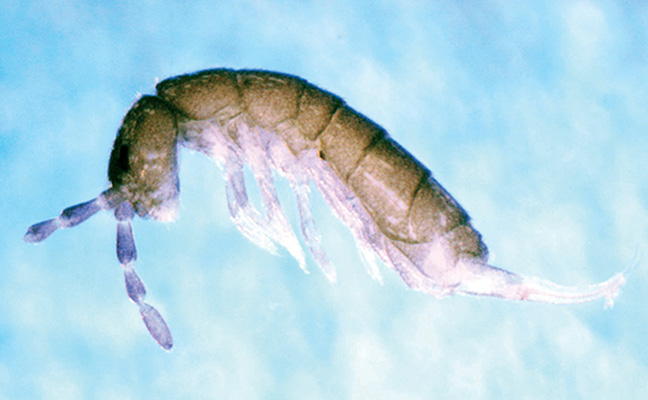Springtails are such an ancient group of arthropods that 400-year-old fossils exist. Despite the presence of three body parts and six legs, these wingless hexapods possess a genetic heritage distinct from their insect cousins. Thus, in recent years, entomologists have relegated springtails (Collembola) to a class separate from insects called Entognatha.
Springtails continue to be relied upon to generate calls from concerned clients, who usually pick up the phone the moment they realize that the tiny specks on their windowsill or kitchen counter are not only moving, but jumping.
Springtails prefer damp conditions, typically outdoors in mulch or leaf litter, but will venture into structures when conditions in their preferred habitat become inhospitable. Extremely dry conditions following periods of wetness will sometimes cause springtails to seek moisture around kitchen sinks, especially when the kitchen sink is adjacent to springtail habitat, such as a well mulched flowerbed or leaves piled against a foundation wall. It is a good practice to check for decaying leaves and other organic debris that may be stuck in gutters or on the roof, which can serve as food and habitat for springtail populations.
Springtails usually will not survive indoors, unless a leak is causing excessively moist and humid conditions. If so, remedying the underlying cause of the leak will result in a rapid decline in populations. Sealing gaps around windows and treating the source of the invasion outdoors can also provide relief.
In most cases, springtails can be an easy fix: Find the source, treat or remove it, seal potential entries and remedy underlying moisture problems. Then, if you still have time, you can tell your client all about the history and nomenclature of these interesting Entognathans.

Leave A Comment